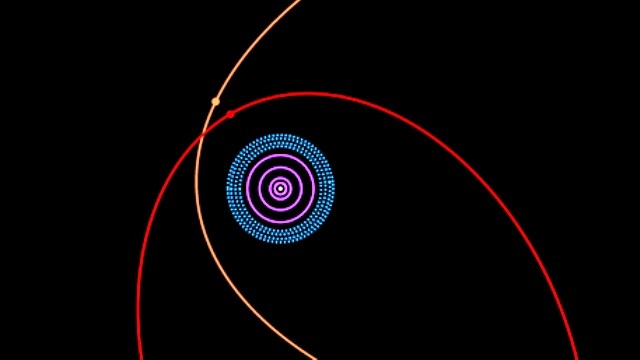
Astronomers have discovered a new dwarf planet – similar to Pluto – at the edge of our solar system. And the discovery could lead on to an even more sensational find: A dark super planet.
Astronomers have named this newfound dwarf planet “2012 VP113”, nicknamed “Biden”, derived from U.S. vice president Joe Biden.
It is believed to be 450 km (280 miles) in diameter and orbits the Sun in the so-called Oort cloud; a gigantic theorized cloud of comets and other objects that surround our solar system, remnants from the birth of our solar system.
The Oort cloud consists of smaller planetary bodies and acts as a boundary at the edge of our solar system and was first theorized by Dutch astronomer Jan H. Oort as to answer the age-old questions: “What are comets, and where do they come from?”

With the discovery of Biden, Pluto receives another sibling in the same category as itself after having been downgraded to “dwarf planet” in 2006.
It is however estimated to be hundreds of dwarf planets in the solar system, however, but the IAU currently recognizes six only, these being Ceres, Pluto, Haumea, Makemake, Eris, and Biden.
More sensational however is the potential future discovery of another planet in our solar system. According to the scientists, the discovery of Biden may indicate that a dark planet exists at the edge of our solar system, but too far away to be reached by the sun’s light and thereby almost impossible to see, hence “dark”.
The reasoning is that the angle of this newfound dwarf planets orbit and also that of Sedna’s, are both very similar, an effect likely caused by the gravitational tug of another, unseen body.
So far the astronomers have been unsuccessful in the search for such a planet about the size of Saturn. But perhaps in the case of a slightly smaller planet, about ten times that of the Earth, it is is quite possible that such a planet exists according to astronomers.
The 2012 VP113 was found when the astronomers took snapshots of the night sky with a Dark Energy Camera at the US National Optical Astronomy Observatory telescope in Chile. And the discovery has now been published in the scientific journal Nature.
_______________
A Sedna-like body with a perihelion of 80 astronomical units
______________________________






















